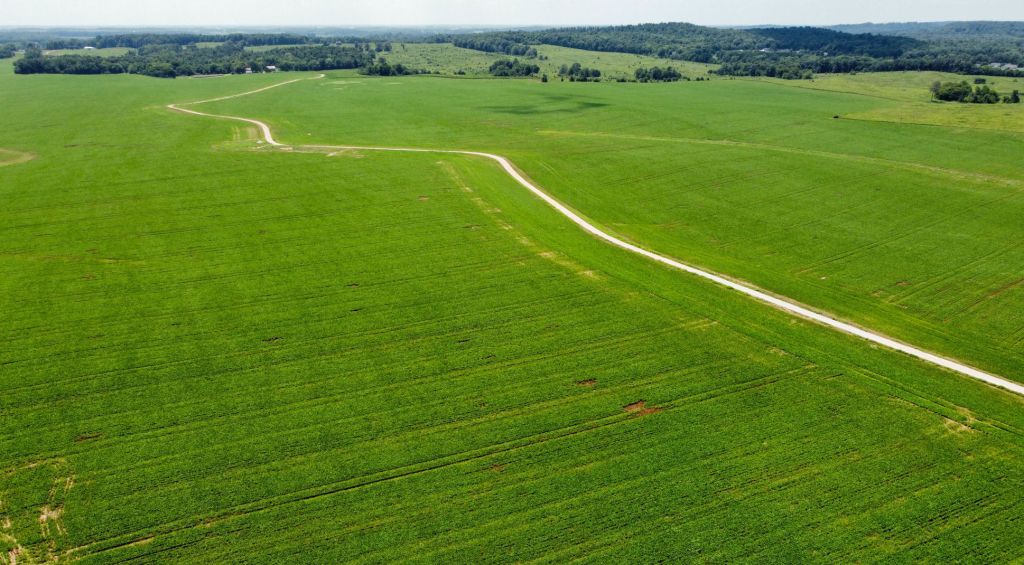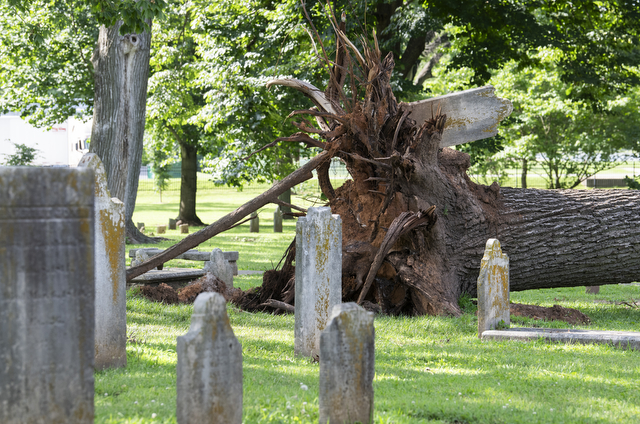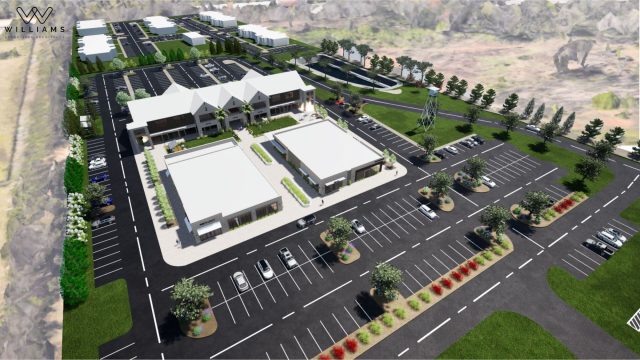Agricultural land shortage is becoming critical
Published 8:15 am Sunday, August 14, 2022

- Soybeans grow in a field in Auburn, Ky., on Wednesday, Aug. 3, 2022. (Grace Ramey/photo@bgdailynews.com)
Editor’s Note: The following commentary was written by Luther B. Hughes Jr. Hughes is retired department head of Agriculture and retired associate VP for Academic Affairs for Enrollment Management at Western Kentucky University, and served two years in the Governor’s Office of Agricultural Policy in Frankfort.
For two years I have debated submitting this “writing” to the Daily News and other sources. I hesitated because this information is controversial. However, recent local, national and international events reinforce my concern which I have expressed in classrooms and in professional meetings … that the next World War could well be over the lack of available food and before then, a possible shortage of food here in the United States.
My premise is that sooner than most understand … the U.S. will not be able to produce enough food for our own citizens.
For over 40 years, I have had the incredible privilege and honor of teaching soil science and crop production to thousands (11,278 to be precise-and yes, I kept a record!) of students at four universities. In addition, I have made hundreds of presentations to clubs and organizations in many different countries.
Most people have only a vague appreciation of the incredible production of food in the United States that has provided food to the United States citizens and to other parts of the world at relatively low prices. A reasonable first question is “How have farmers in the U.S. been so productive in comparison with producers in other parts of the world?” I have told many students that my experiences and studies indicate there are 3 clear primary reasons why U.S. farmers are so productive: 1) Through no effort on our part, God blessed the U.S. with millions of acres of very fertile relatively flat land (prime agricultural land) on which food products could be abundantly produced; 2) A huge percentage of that prime agricultural land is located where there is generally an adequate amount of rainfall to produce those food products; 3) Universities and companies studied, developed and effectively and appropriately disseminated scientific and engineering improvements and information to producers. The development of fertilizers (needed nutrients), important controls of pests, improved varieties of plants (plant breeding), improved breeds of animals, controlled irrigation and conservation practices all contributed to the incredibly increased food production levels.
Go back in time and just in the United States for this information. Specifically, look at Kentucky. When early settlers came into Kentucky, they first settled generally in Eastern Kentucky where the amount of flat fertile land was comparatively sparse. Erosion on those steep, mountainous soils had removed even the slightly fertile topsoil. Consequently, at that time, and even today, farmers in those areas were able to eke out a living only for their own families. There was little surplus to exchange for other goods/services. A family spent all of their time producing food just for their own family … truly an agrarian society. In the early 1800s, one farmer could produce enough food for perhaps 5 people with the entire family involved in the production of food. They did not move and they stayed near poverty level.
Contrast that with those early settlers who moved on to central Kentucky (Lexington area) and southcentral Kentucky (Bowling Green/Glasgow areas). Large expanses of prime agricultural land existed … fertile and flat. Farmers in these areas produced an abundance of food … a significant surplus … for which they could exchange that food for other goods and services. Rather than just growing food for themselves only, one farmer could produce enough for perhaps 20 others. That enabled other citizens to become providers of goods and services, i.e. businessmen, doctors, dentists, lawyers, feed producers, etc. Thus, the agrarian society moved to become a more “urban” society. Repeating, not everyone had to “worry” about literally growing their own food. They could purchase some of the excess food being produced by the more productive farmers. These citizens, farmers and others became more wealthy through hard work but mainly from the availability of fertile highly productive soils. The large difference in the quantity of “prime” agricultural land for food production absolutely created social and economic differences in the two parts of Kentucky that largely still remain today.
All crop food plants throughout the past required nutrients. Nutrients, such as nitrogen, phosphorus and potassium are needed in largest amounts. In early days, the only source of these nutrients was basically decaying plants and animals, mostly livestock manure. In order to produce more vigorously growing crops, fertilizers were developed. These nutrient-based fertilizers catapulted food production to incredible levels. Then machines were developed to both plant and harvest in much more efficient ways.
With these scientific and engineering achievements, now in 2022, one farmer in the U.S. can produce food for 160 people. No other country can match these achievements. This production has permitted low-cost food to most U.S. citizens and provided most of our citizens the opportunities for careers in a multitude of areas. Thank the productive farmer (only 2% of the population) for giving so many an opportunity for careers not requiring the physical labor of growing their own food.
But we are approaching the horizon of food shortage in the U.S. How can that be? Remember the key is the availability of prime agricultural land … flat highly fertile soils. This is the potentially controversial part of this commentary. We are losing prime farm land at an alarming rate. In the last 15 years in the United States, over 30 million acres of land have been lost to non-food producing entities. That is an area approximately the size of the state of Kentucky! —in 15 years! How? WHY?
In a recent national study, the American Farmland Trust indicated more than 2,000 acres of prime agricultural land every day is permanently removed from food production. We all agree that development is vital to our society. So don’t instantly criticize development but think about it.
Development includes the construction of highways, homes, other buildings, airports, lakes, etc., etc. Once land is developed, it can never ever again be used for food production. Food production potential is permanently lost. One example: US 68/80 just a few years ago was made four lane for over 80 miles through Warren, Logan, Todd, Christian and Trigg counties. Construction of each mile of four lane highway requires approximately 1,200 acres of land. What land was taken for this highway construction? In this example, the best prime agricultural land in Kentucky was taken. Why? It is flat and cheaper to build on that land than hilly topography requiring road cuts through solid rock. If the highway had been moved approximately one mile north, much prime agricultural land, large food producing land would have been saved. However, each mile would have been much more expensive to construct. So, how does society trade off – future food production vs cost of construction? In this example, the decision was made resulting in the loss of thousands of acres of prime agricultural land – FOREVER LOST.
Another major development is for homes, my home, your home. Where are they built? Often on prime agricultural land. Almost every week, the local Planning-Zoning Commission rezones prime agricultural land to development permanently removing agricultural land from food production. FOREVER LOST. Is that looking to the future with concern for availability of food? Who has a good answer for that?
Another question to consider. Can non-prime agricultural land be used to construct large solar energy farms rather than prime agricultural? Why not?
Let me quickly defend farmers who sell their land for development. Farmers have their lifetime earnings not in bank accounts but in the value of their land and machinery. If farmland has a value of $4,000 (choose any value) per acre and they are offered many times that per acre for building/construction sites, who will deny that opportunity for profit? Many farmers I have known would prefer continuing the farming opportunity they have enjoyed. However, the opportunity for profit and to realize the result of the increased value of their land for which they have given their entire lifetime of blood, sweat, and tears is a decision that can hardly be criticized. But loss of land for food production cannot be denied either.
Perhaps we can look for different decisions from planning and zoning commissions. Perhaps development can be steered to non-prime agricultural land. Perhaps, as in some states, long-term planning can aggregate and direct development in more concentrated areas on non-prime agricultural land rather than permitting sprawling development. Easier said than done? For sure. Land closer to an urban area is more expensive to develop than land in an agricultural community. Who will make an alternative decision?
Some alternatives are being explored. Kentucky is one of several states that has passed legislation that permits a tax deduction if prime agricultural land is put in a “land preserve” in perpetuity (forever). In this program, the land can only be sold to another who will maintain the land in agricultural production. The land is taxed only on the agricultural value with an additional possible tax deduction for the difference in the development value and the agricultural value. In Kentucky, PACE (Purchase of Agricultural Conservation Easements) was developed by legislative action and is the opportunity to preserve prime agricultural land. Some state legislatures have provided funds to keep agricultural land in production through these programs. In the 1980s Kentucky’s legislature provided a small amount of funds for this prime agricultural land protection, but not enough to make a real encouragement for prime agricultural land preservation.
I have confidence that the nation’s agricultural community (farmers) can still achieve increased production of food per acre. However, at the current rate in which prime agricultural land is being lost, I would suggest that in less than 30 years, we will not have enough land to produce adequate food for U.S. citizens and none to sell to other countries. If you want to see inflation, food will be scarce AND food prices will rapidly increase. In addition, countries will likely have arguments (war?) with other countries over who has access to food.
There are other issues that will affect adequate food availability. Other countries are purchasing large masses of U.S. agricultural land. China is one, but not the only country. If land owned by China produces food products, will they have the option to send that food only to China or wherever they choose, not to the United States, where it is grown? The second issue is the purchase of major agricultural companies by other countries. One example is Smithfield Meat, which is mostly owned by another country and is a sizable processing company of meats. Are these issues part of the concern of the United States food supply chain? You answer.
Think about the readily availability and low cost for food in the past. It is clearly changing. Pay attention to these issues as they are being brought to the nation’s attention. I believe it is a major concern sooner than we have expected. Shortage of food is on the horizon and prices are definitely going to dramatically increase. Food has been a very small percentage of our cost of living for many years. That percentage is already and will continue to rise. Find a way to preserve prime agricultural land for food production. It is time to find solutions. Failure to do so will have dire consequences for the availability of food even in the United States of America in the near future. Having this conversation is useful to consider. Answers/solutions are challenging.
I raise the issue of the loss of prime agricultural land – the loss of food production capability. How will you (all of us) respond? The response of all of us as a society, will determine our future food availability.
Lastly, be proud of America, the best place to live and have adequate low-priced food – at this time.






